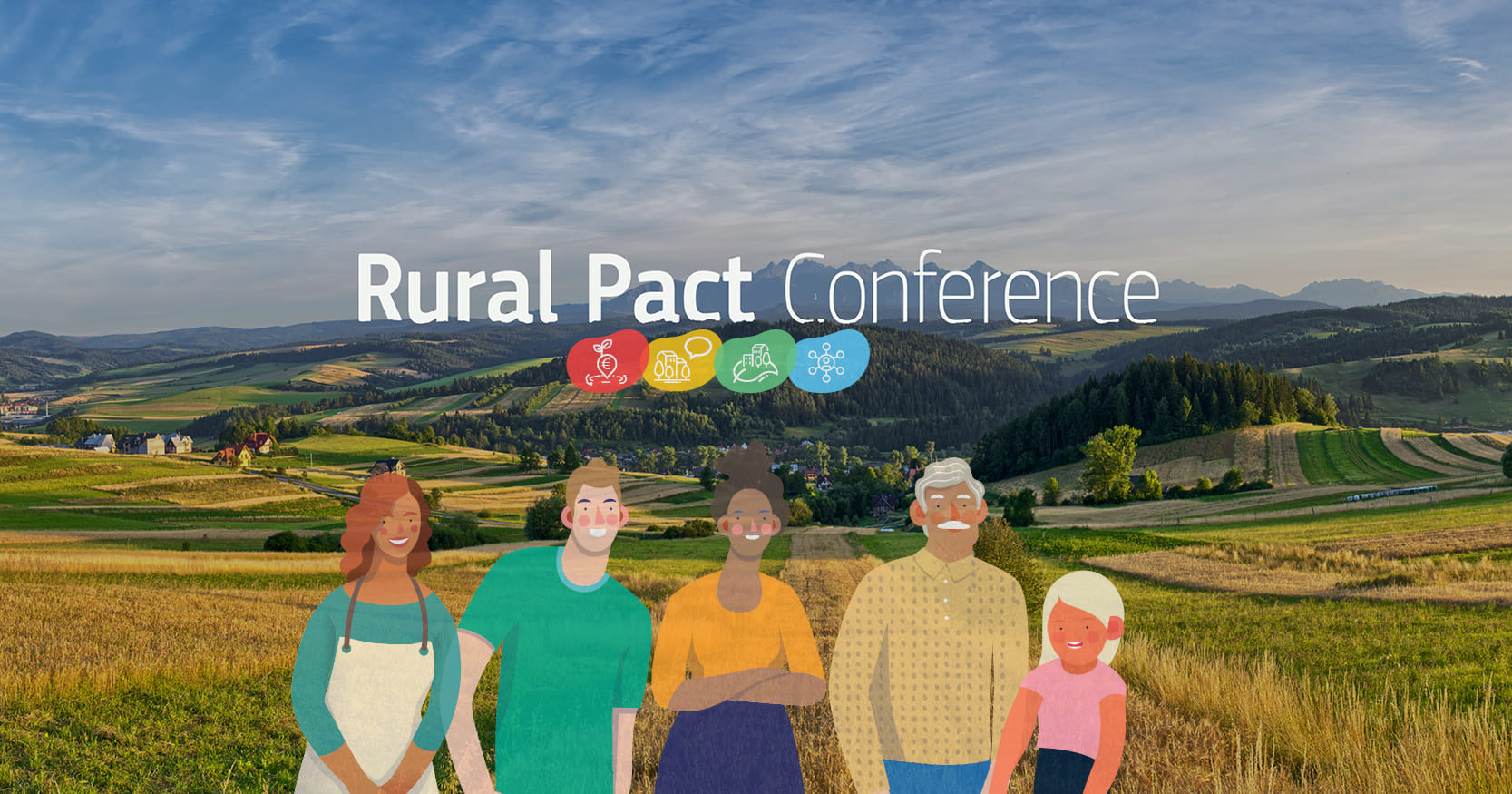
Representatives of European, national, regional and local level gathered in Brussels to discuss matters related to rural areas through participatory workshops as well as a plenary session.
In the two days of the conference, participants and members of the Rural Pact community committed to making the EU’s rural areas stronger, more connected, resilient and prosperous by 2040.
The conference sought to engage its participants in the design of the Rural Pact governance and to muster support for the achievement of the long-term vision for the EU’s rural areas.
A Shared vision for Rural Areas
Given the crucial role that rural areas can play in Europe’s future, the conference assembled rural stakeholders and all levels of governance in a joint endorsement of the Vision’s goals.
From the grassroots to the highest level of decision-making, representatives committed to taking the interests of rural areas into account. The conference was also an occasion to present inspirational examples already working towards the Vision goals.
Moreover, several breakout sessions allowed participants to indicate how they could contribute to the implementation of the Vision.
These sessions identified common interests and areas on which the local, regional and national level could act individually and in cooperation with others. The output of these sessions and suggested actions were collected and presented during the conference’s closing session.
Such material will form the basis for the Rural Pact’s work programme which will complement the Rural Action Plan, already presented by the European Commission.
Involving high-level political guests from national and European institutions granted greater visibility to the discussion of the first comprehensive EU-wide rural strategy.
Such high-level participation will be key in the strengthening rural areas’ positive potential and their strategic role in Europe’s future. This also assures buy-ins from all levels of governance, as well as an increase of the policy’s impact in rural areas.
Commitments
The Rural Pact conference led to the collection of 40 commitments on site, building on those presented before the event itself. These commitments address specific issues arising in rural communities and reflect the priorities identified by the latest Eurobarometer on rural areas published in April 2021.
The key needs of rural areas mentioned most frequently by respondents are transport infrastructure and connections (44%). This is followed by access to healthcare, childcare or care for the elderly and the availability of jobs/employment/business opportunities, mentioned by 27%. A similar proportion (26%) mention digital infrastructure.
The Role of the European Commission in the Rural Pact
The European Commission will facilitate the set up and work of the Rural Pact and will help by monitoring the implementation of the commitments made under its auspices.
In addition, the Commission will undertake a series of actions to support rural areas, such as the launch the EU rural observatory to provide more detailed data on economic and demographic trends in the EU’s rural areas; the publication of a toolkit on access to EU funding opportunities for these areas, monitoring the use of all EU funds, including Cohesion policy funding to support rural areas in the 2023-27 period and report on its findings.
The Commission will also launch a website by the end of 2022 in order to have a single entry point to all rural vision activities, including the rural revitalisation platform.
Over EUR 60 billion is available for rural development under the Common Agricultural Policy for the period 2023-27. Under the new CAP, at least 35% of these funds will be allocated to measures to support local development, climate, biodiversity, environment and animal welfare.
Over 25% of EU cohesion policy investments for the 2014-20 period also helped keep rural areas strong. Cohesion policy will continue to invest in rural areas through the partnership agreements and operational programmes of the new programming period.
This will notably take place through the new cross-cutting policy objective dedicated to sustainable, place-based territorial and local development: “Policy Objective 5 – Europe closer to citizens”.
On the basis of the agreement of the Rural Pact’s governance, concrete actions will follow. Membership of the Rural Pact Community is still open and commitments can still be submitted online.
The Rural Pact – background
The Rural Pact, adopted by the European Commission in June 2021, is one of the main initiatives to achieve the goals of the long-term vision for the EU’s rural areas.. The Rural Pact is a framework for cooperation among authorities and stakeholders dealing with rural territorial development at the European, national, regional and local level. Its objectives are to amplify rural voices and bring them higher up the political agenda, to structure and enable collaboration and mutual learning, and to encourage and monitor voluntary commitments for action. Following the call to express support for the Pact made by Vice-President Šuica, Commissioner Wojciechowski and Commissioner Ferreira in December 2021, over 1,000 representatives of public authorities, civil society organisations, businesses and research, innovation and academic organisations joined the Rural Pact community.